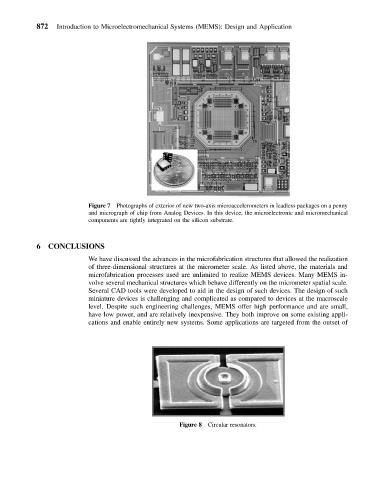Page 881 - Mechanical Engineers' Handbook (Volume 2)
P. 881
872 Introduction to Microelectromechanical Systems (MEMS): Design and Application
Figure 7 Photographs of exterior of new two-axis microaccelerometers in leadless packages on a penny
and micrograph of chip from Analog Devices. In this device, the microelectronic and micromechanical
components are tightly integrated on the silicon substrate.
6 CONCLUSIONS
We have discussed the advances in the microfabrication structures that allowed the realization
of three-dimensional structures at the micrometer scale. As listed above, the materials and
microfabrication processes used are unlimited to realize MEMS devices. Many MEMS in-
volve several mechanical structures which behave differently on the micrometer spatial scale.
Several CAD tools were developed to aid in the design of such devices. The design of such
miniature devices is challenging and complicated as compared to devices at the macroscale
level. Despite such engineering challenges, MEMS offer high performance and are small,
have low power, and are relatively inexpensive. They both improve on some existing appli-
cations and enable entirely new systems. Some applications are targeted from the outset of
Figure 8 Circular resonators.

